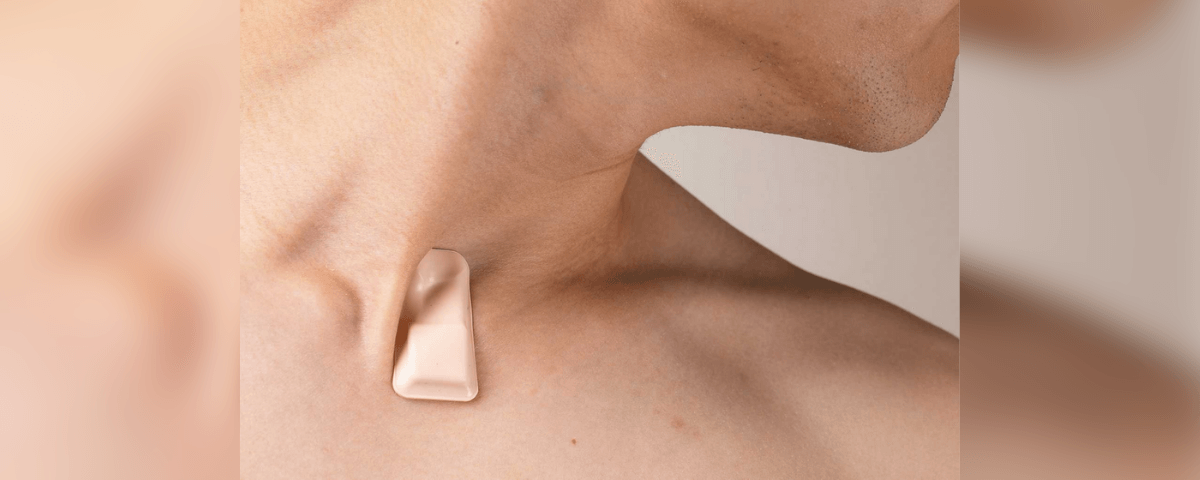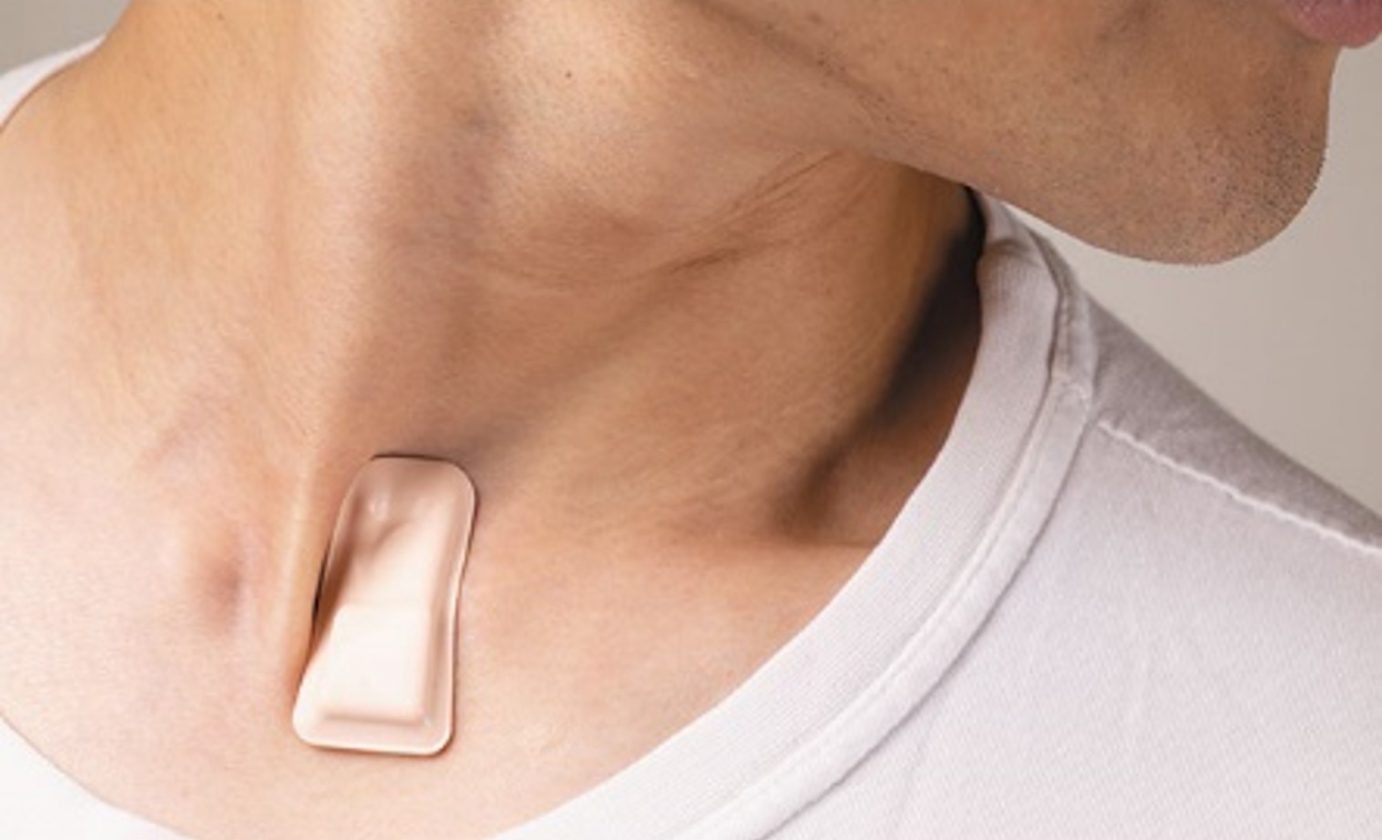


The novel virus wreaking havoc globally, COVID-19, has caused a sudden significant increase in hospitalizations for multiorgan disease, especially pneumonia. COVID-19 is caused by the Severe Acute Respiratory Syndrome Coronavirus 2 (SARS-CoV-2). SARS-CoV-2 infection may be asymptomatic, or it may cause a broad spectrum of symptoms, from mild symptoms of upper respiratory tract infection to life-threatening sepsis.(1)
Artificial intelligence innovation has played a vital role in various aspects of the fight against COVID-19. Some of these roles have been: prediction and tracking, contact tracing, remote monitoring of symptoms, early diagnosis, triaging, and development of therapeutics.
The ADAM Sensor®, engineered by the Northwestern University and Shirley Ryan AbilityLab team, provides cyclic monitoring for COVID-19 patients and those exposed to it.
The ability to monitor patients and staying updated to changing conditions in real-time will give clinicians a new and vital tool in the fight against COVID-19, potentially prompting earlier intervention and treatment.

At the end of 2019, the novel Severe Acute Respiratory Syndrome Coronavirus 2 (SARS-CoV-2) emerged abruptly and caused one of the biggest crises the world has seen to date. In March 2020, the World Health Organization declared the SARS-CoV-2 a global pandemic.(2)
Artificial intelligence has come to play a crucial part in the fight against this virus. Some of its roles have been tracking, contact tracing, remote monitoring of symptoms, early diagnosis, and treatment development.
In May 2020, a collaboration between researchers at the Northwestern University and Shirley Ryan Ability Lab in Chicago yielded a stamp-sized wearable device capable of monitoring COVID -19 symptoms remotely.
This team of researchers propelled their revolutionary product through Sonica Health, a digital medical company, under the brand name of ADAM sensor®. The company primarily uses mechano-acoustic signatures and translates them to provide valuable insight into human health.(3)

The collaboration mentioned above resulted in a soft, pliable rubber patch called the ADAM Sensor®. It was developed to monitor COVID-19 symptoms, functioning as a flexible wireless sensor to identify and monitor the early symptoms of coronavirus and its progression.
The ADAM Sensor® adheres to the skin at the suprasternal notch, where it measures small vibrations and senses variables. This device focuses on frequency, intensity, and sound of coughs and breathing and respiratory rate, and effort. Additionally, The ADAM Sensor can also read blood flow signatures and monitor the heart rate due to its close relation to the carotid artery.(3)
As stated by the CDC, the classic initial symptoms of COVID-19 – fever, cough, shortness of breath – are primary, non-specific symptoms seen in both COVID-19 and non-COVID-19 cases. ADAM Sensor® ensures that no detail is missed through its constant data collection method. Even minute details, such as very brief transitory periods of heart rate spikes in moderate cases, can be monitored through this device.
Data recorded is uploaded and sent to a HIPPA-compliant cloud-based dashboard where physicians can review any patient irregularities under their supervision.(1,3)

The collaboration mentioned above resulted in a soft, pliable rubber patch called the ADAM Sensor®. It was developed to monitor COVID-19 symptoms, functioning as a flexible wireless sensor to identify and monitor the early symptoms of coronavirus and its progression.
The ADAM Sensor® adheres to the skin at the suprasternal notch, where it measures small vibrations and senses variables. This device focuses on frequency, intensity, and sound of coughs and breathing and respiratory rate, and effort.
Additionally, The ADAM Sensor can also read blood flow signatures and monitor the heart rate due to its close relation to the carotid artery. As stated by the CDC, the classic initial symptoms of COVID-19 – fever, cough, shortness of breath – are primary, non-specific symptoms seen in both COVID-19 and non-COVID-19 cases. ADAM Sensor® ensures that no detail is missed through its constant data collection method. Even minute details, such as very brief transitory periods of heart rate spikes in moderate cases, can be monitored through this device.(3)
Some advantages of the ADAM Sensor® are the soft, flexible rubber band-aid-like appearance, granting it a comfortable 24/7 wearability, giving way to continuous monitoring of the signs and symptoms associated with COVID-19.(3)
The location of adherence for the ADAM Sensor® is another advantage, as it can precisely monitor cardiorespiratory function and variables effectively and continuously. Any irregularity documented allows physicians to review them carefully and take action promptly.
Some disadvantages of the ADAM Sensor® are that the device is still limited in the specificity and accuracy of the data it can gather. This sensor picks some but not all key variables – i.e., it does not offer pulse oximetry – and breathing rate measurements are not highly accurate.
Although highly innovative and promising, ADAM Sensor® must be approved for remote patient monitoring by the Food and Drug Administration (FDA) before using it in the US.
The SARS-CoV-2 outbreak has challenged the economic, medical, and public health infrastructure of many countries.(2)
One of the most significant challenges we are facing during this pandemic is thwarting its transmission. The inability to quickly identify, trace and isolate new cases before they can further spread the infection to susceptible individuals has proven a formidable opponent even in first-world countries.
Advancements in artificial intelligence have proven an essential weapon against this disease and have given way to many innovating approaches to these issues, including the ADAM Sensor®.

While currently imperfect, this wearable device has incredible potential. It provides much insight into early COVID-19 symptoms that could prove otherwise undetectable with traditional monitoring systems in a remote setting. With further improvements, this device can improve overall patient outcomes and reduce the burden on an otherwise overwhelmed healthcare system.